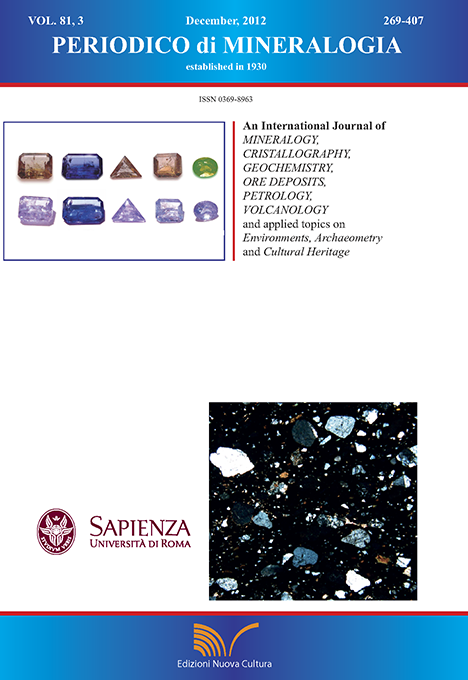Mineralogical and chemical investigations on the ceramic technology in Čoġā Zanbil (Iran, 1250 BC)
DOI:
https://doi.org/10.2451/2012PM0021Keywords:
Archaeometry, Ceramic, Powder Diffraction, Rietveld Method, Simulated Thermo Analysis, Polarized Light Microscopy, Elamites, Čoġā Zanbil, IranAbstract
Characterizations of archaeological finds are an essential feature for the interpretation of data from excavations. The investigated samples date from Elam period (1250 B.C.), which is an important period for archaeology, because of the introduction of new technologies that ameliorate the quality of materials used in daily life, and furthermore because of the expansion of the Elamite kingdom in the Iranian plateau.
Basically this paper focused on the investigation of the parameters which have been interested for characterizing the ceramics production in the past.
The ceramic pieces studied in this paper come from archaeological excavations carried out in Čoġā Zanbil, in the south west of Iran, between 2002 and 2004. Based on archaeological interpretation they belong to the middle Elamite period (1500-1100 B.C.).
The samples have been investigated by quantitative X-ray diffraction inclusive Rietveld phase refining method for determining the crystalline phases in the matrix of ceramics, and simultaneous thermo analysis to characterize the decomposition of the constituent phases during the sintering process. Furthermore thermo analytical studies proved that, during the middle Elamite period, existed a dissimilar thermal behaviour due to different fabrication conditions. Observation by polarized light microscopy included additional information on the manufacturing process by means of the identification of different additives, used within the ceramic matrix.
The results provided information on the existence of a similar raw material, and different manufacturing technique in the ceramic production in the middle Elamite period, in Čoġā Zanbil.


